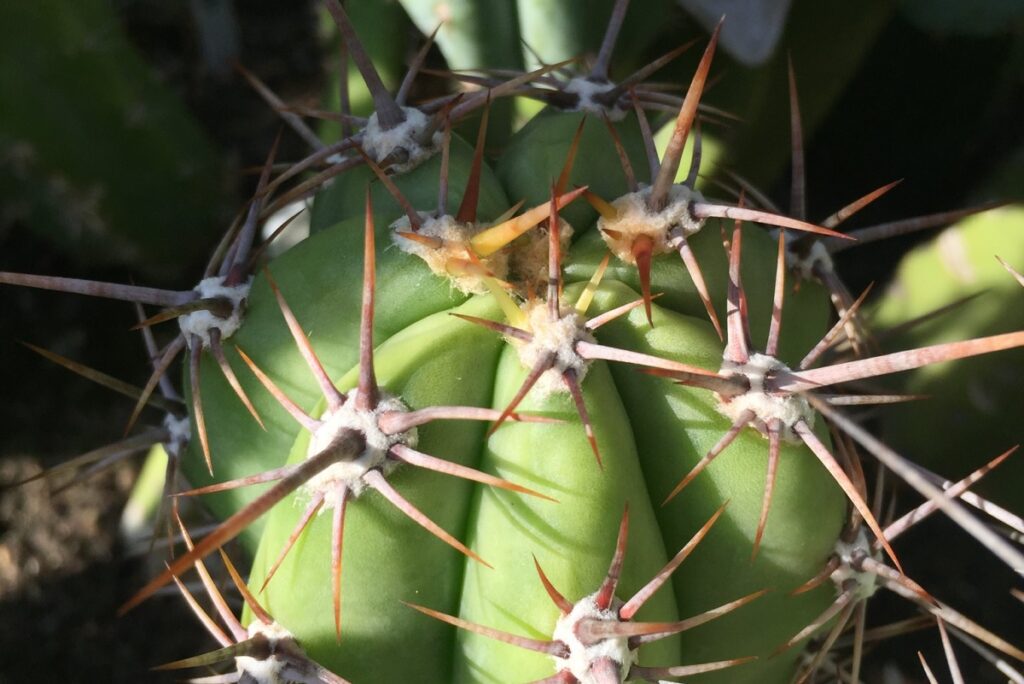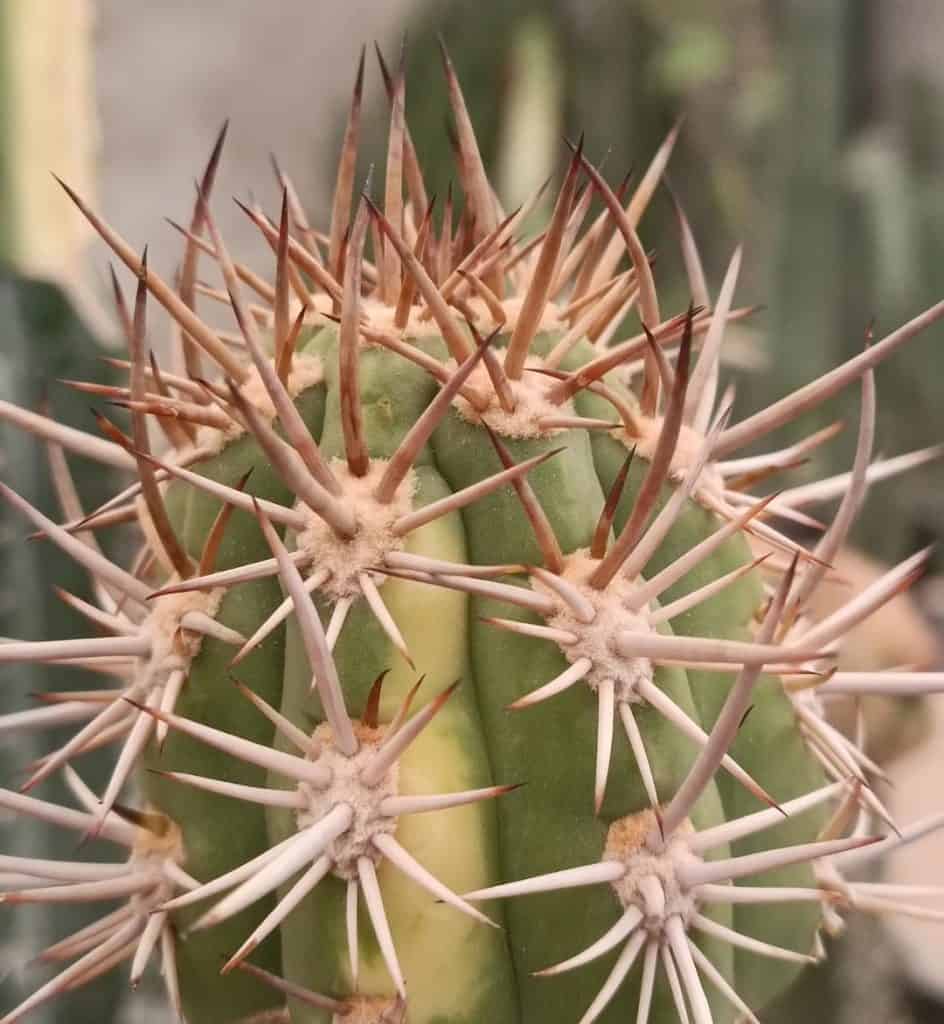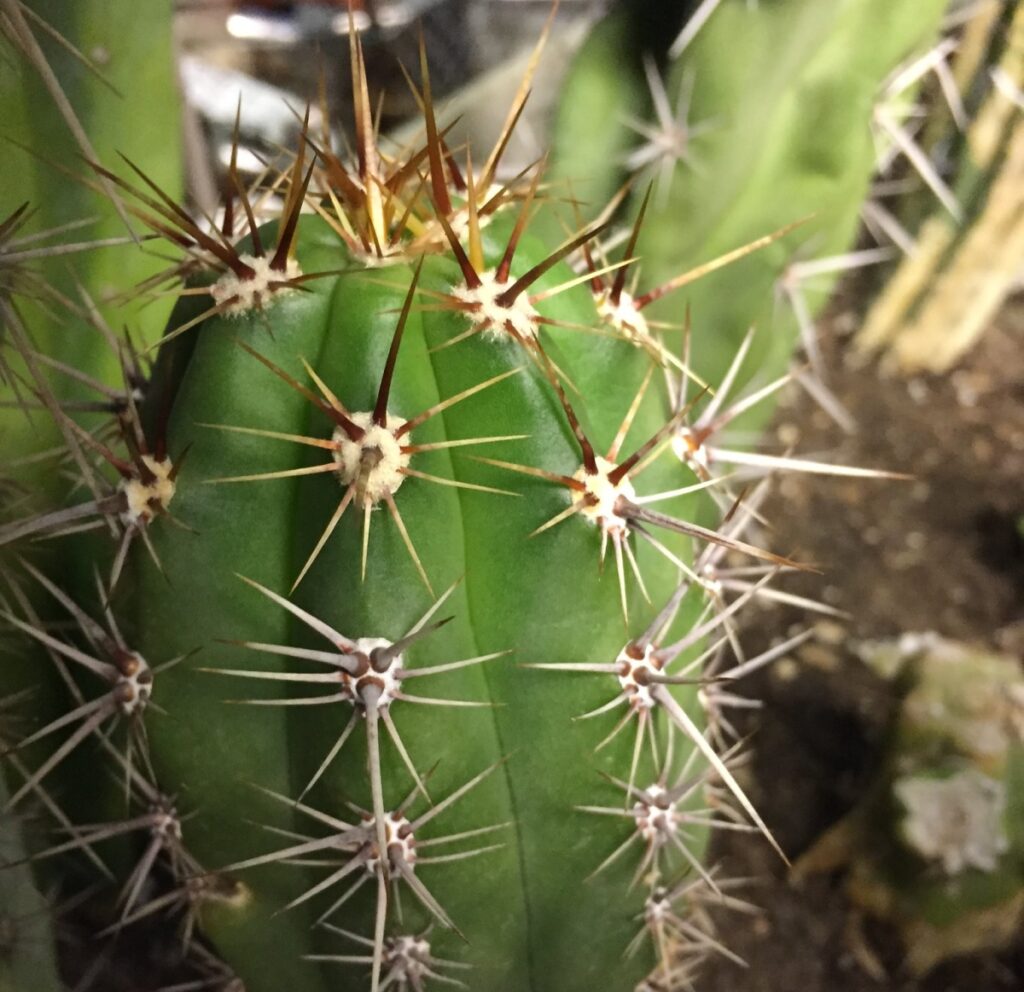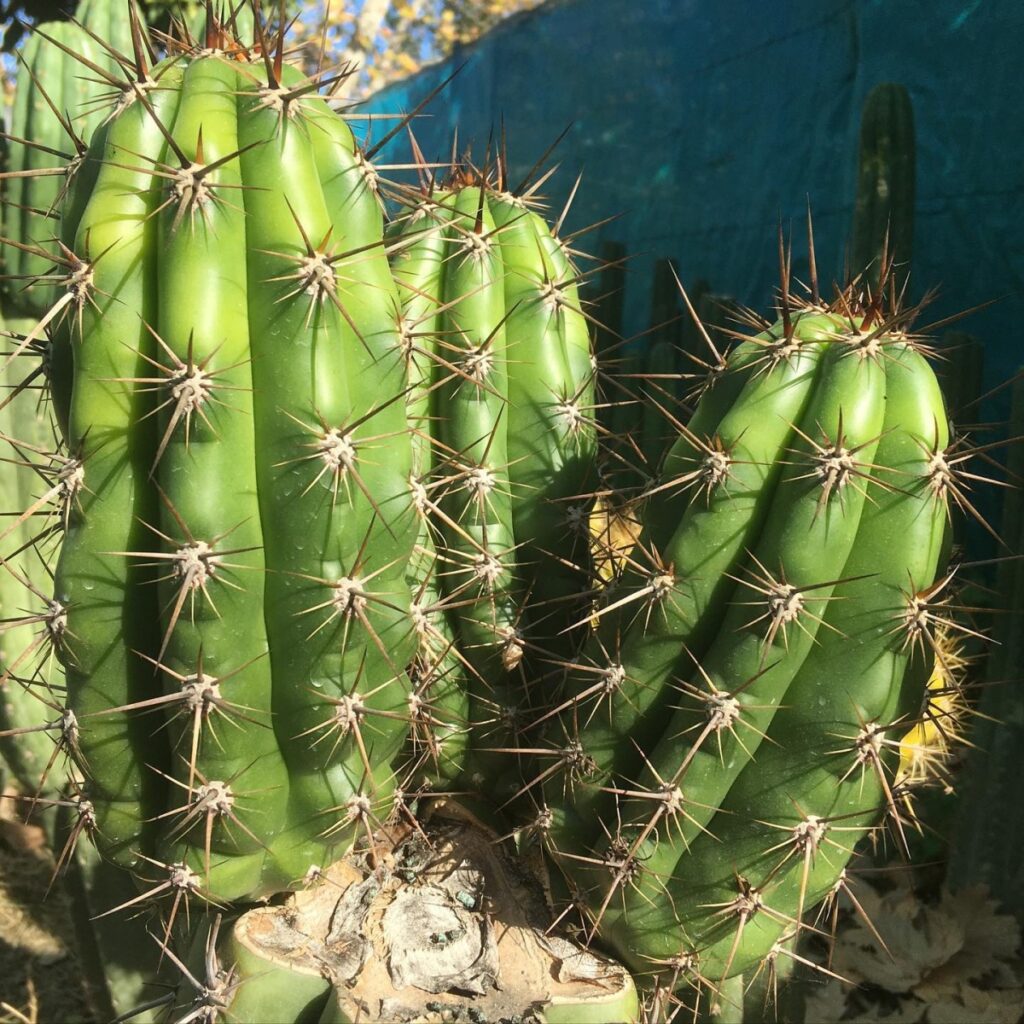Trichocereus taquimbalensis: The Cactus with a Distinctive Spine Style
Have you ever seen a cactus that looks like it’s wearing cool spiky jewelry? Meet the Trichocereus taquimbalensis – a totally unique cactus that will blow your mind with its crazy spine style!

Contents
About Trichocereus taquimbalensis
This funky cactus comes from Bolivia and is really different from other cacti. It has thick, bright green stems that can grow over 8 feet tall in the wild! The stems have 8-9 ribs that stick out in an awesome pattern. And get this – the areoles (the spots where the spines come out) look fuzzy and brown, sticking out almost half an inch!
But the best part is definitely the spines. The radial spines (the ones circling the areoles) are 8-13 in number and up to 4 inches long. Then there are 2-3 thick central spines that look like they’re wearing knobby bracelets at the base. One or two point upwards up to 6 inches, while another points down over a foot long! To top it off, this cactus has stunning white, funnel-shaped flowers. It’s like a work of art!

Related Post:
40 Types Of Trichocereus Species [With Pictures]
Caring for Your Trichocereus taquimbalensis
Even though this cactus looks wild, taking care of it is actually pretty easy if you follow some simple tips:
Light
These cacti love plenty of direct sun once established, around 6-8 hours daily. If growing indoors, use a grow light for 14-16 hours. Baby cacti need some shade to avoid sunburn though.
Watering
In summer, water when the soil is bone dry, just enough to moisten it. In winter (Oct-Apr), don’t water at all since the cactus rests. Mushy stems mean overwatering.
Soil

A cactus soil mix with good drainage is perfect, or make your own with sand, gravel, peat and perlite. Slightly acidic, fertile soil is ideal.
Fertilizer
Not really needed unless growth seems slow. If you do fertilize, use a diluted cactus fertilizer monthly in spring/summer.
Temperature and Humidity
These tough guys can handle temperatures from around 50°F to over 100°F! Average household humidity is fine.
Pests and Problems
Watch for fungal rots, root aphids, mealybugs or spider mites. Black spots on stems are a minor fungal issue.
Pruning
Prune off any rotting, dead or post-flowering stems to control size and shape.

Potting and Repotting
Repot young plants yearly, then every 2-4 years in spring as they outgrow their pot.
Propagating Trichocereus taquimbalensis
Propagating your Trichocereus taquimbalensis is easy and fun!
From Cuttings:
- Take a cutting and let it callus over for a few days
- Plant cutting 2-3 inches deep in cactus soil
- In 2-3 weeks, tug gently to check for new roots
From Seed:
- Plant seeds just below soil surface
- Keep soil moist and temps around 80°F days/70°F nights
- Seedlings should sprout roots in a month or so
With its wild spines and cool appearance, the Trichocereus taquimbalensis makes an awesome, low-maintenance plant pal! Give this funky cactus a try.
